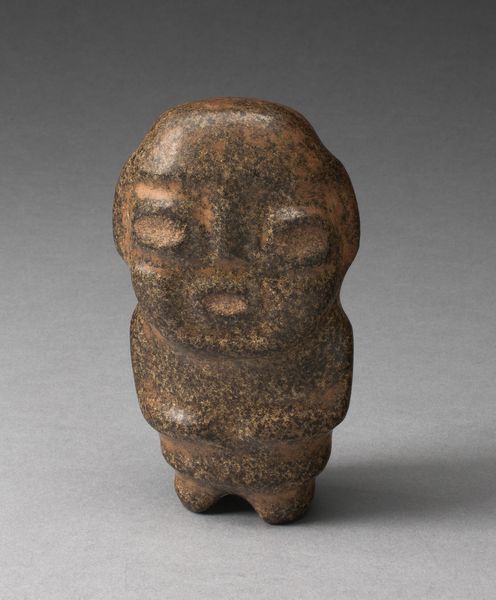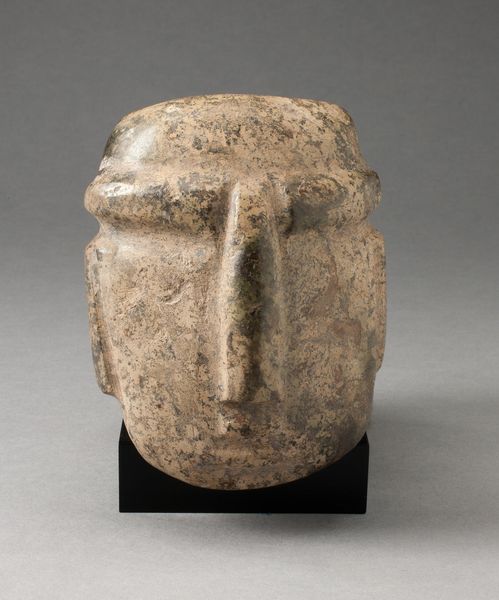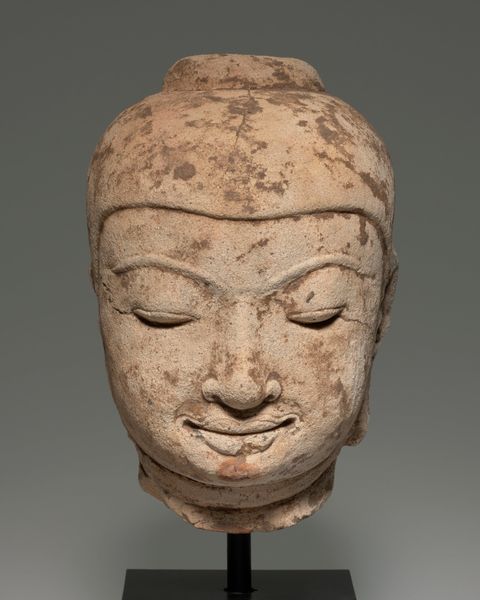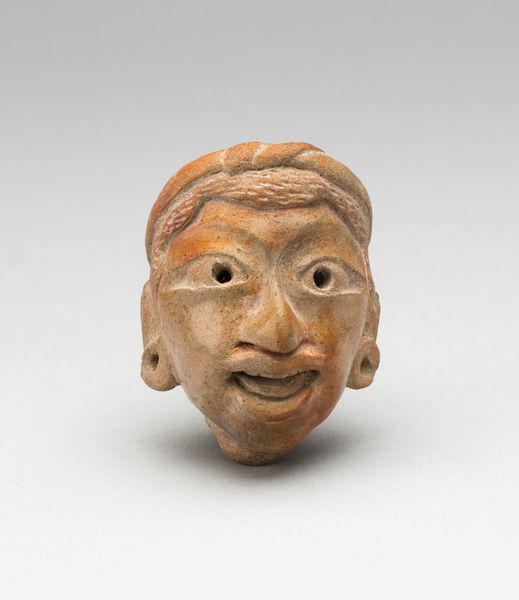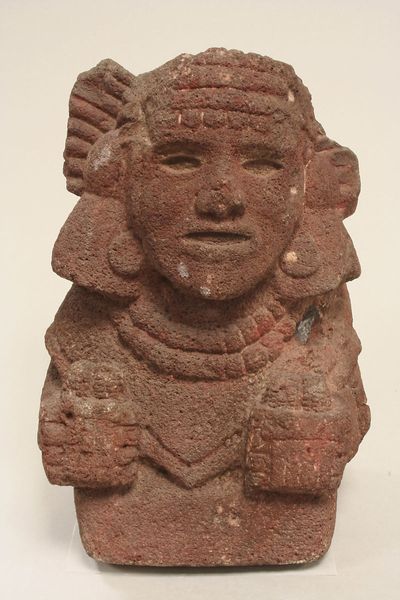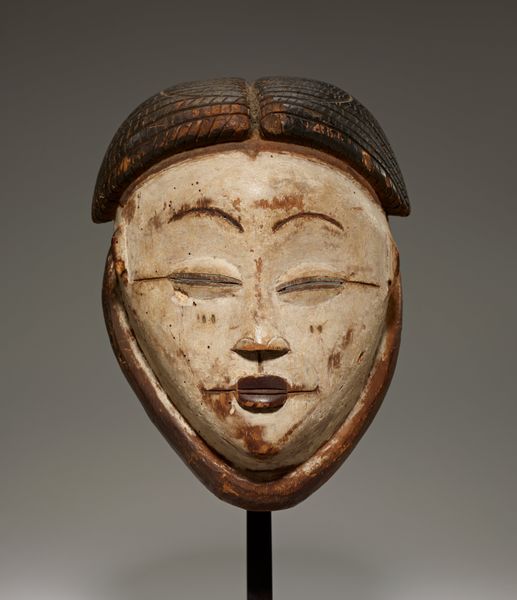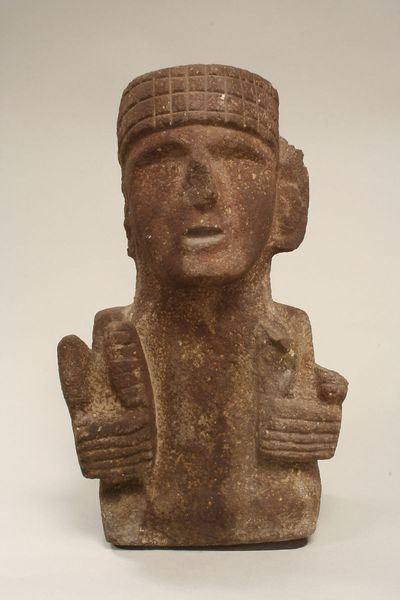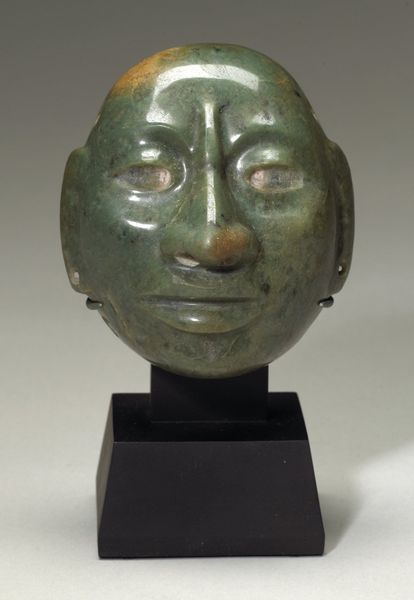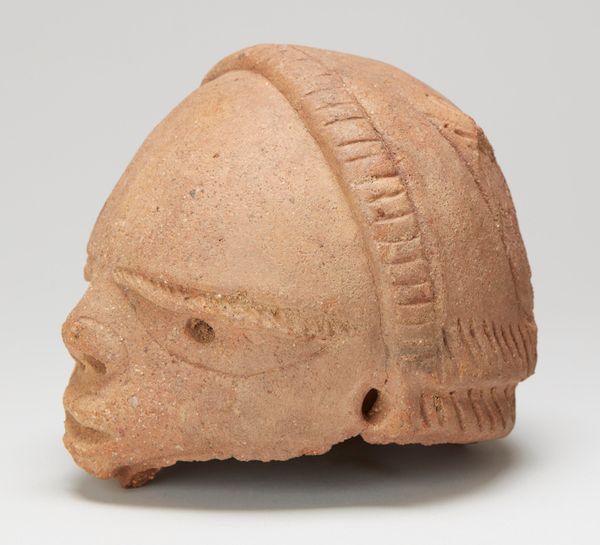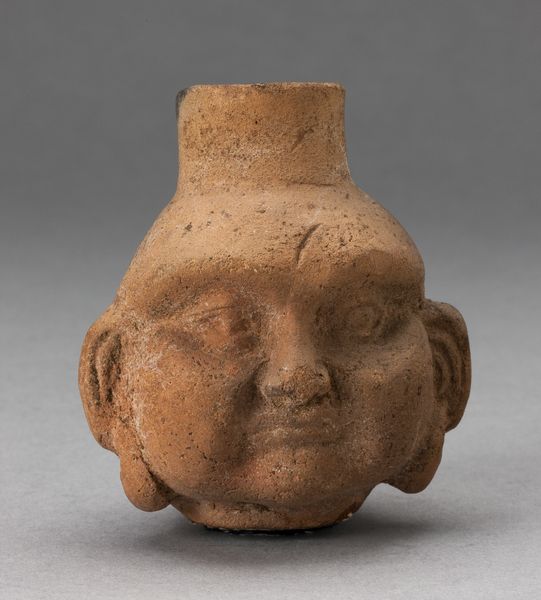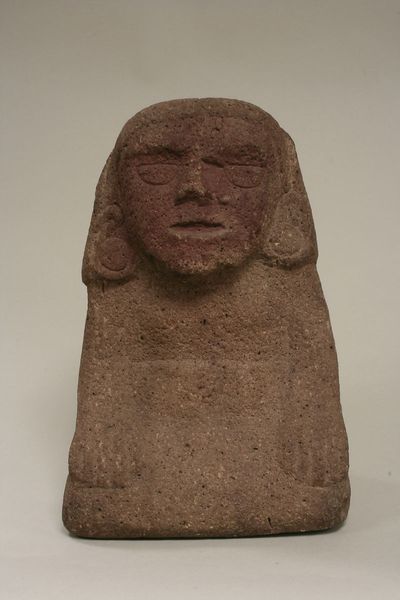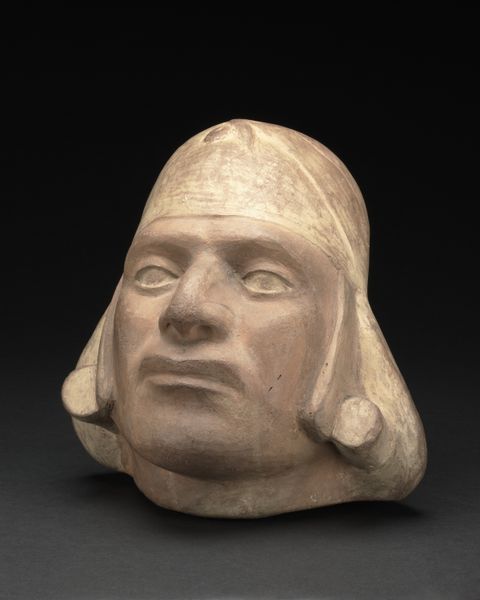
carving, sculpture
#
portrait
#
carving
#
sculpture
#
figuration
#
sculpture
#
indigenous-americas
Copyright: Public domain
This sculpture, "Head," was crafted by Aztec artists between 1300 and 1521. Carved from stone, the head presents a symmetrical, almost stoic, form. The texture of the stone gives the face a weathered appearance, hinting at the passage of time and the elements it has endured. Consider the formal qualities of the sculpture: the deliberate shaping of the eyes, nose, and mouth; the texture of the stone itself. These elements aren't merely representational; they're integral to the sculpture's communicative power. The Aztecs, like many ancient cultures, embedded profound symbolic meaning in their artworks. This head, with its formal symmetry and carefully worked features, likely served a ritualistic or commemorative function. The stone, as a medium, also plays a significant role, symbolizing permanence and a connection to the earth. The enduring nature of stone contrasts with the ephemeral nature of human existence, suggesting a meditation on mortality.
Comments
No comments
Be the first to comment and join the conversation on the ultimate creative platform.

